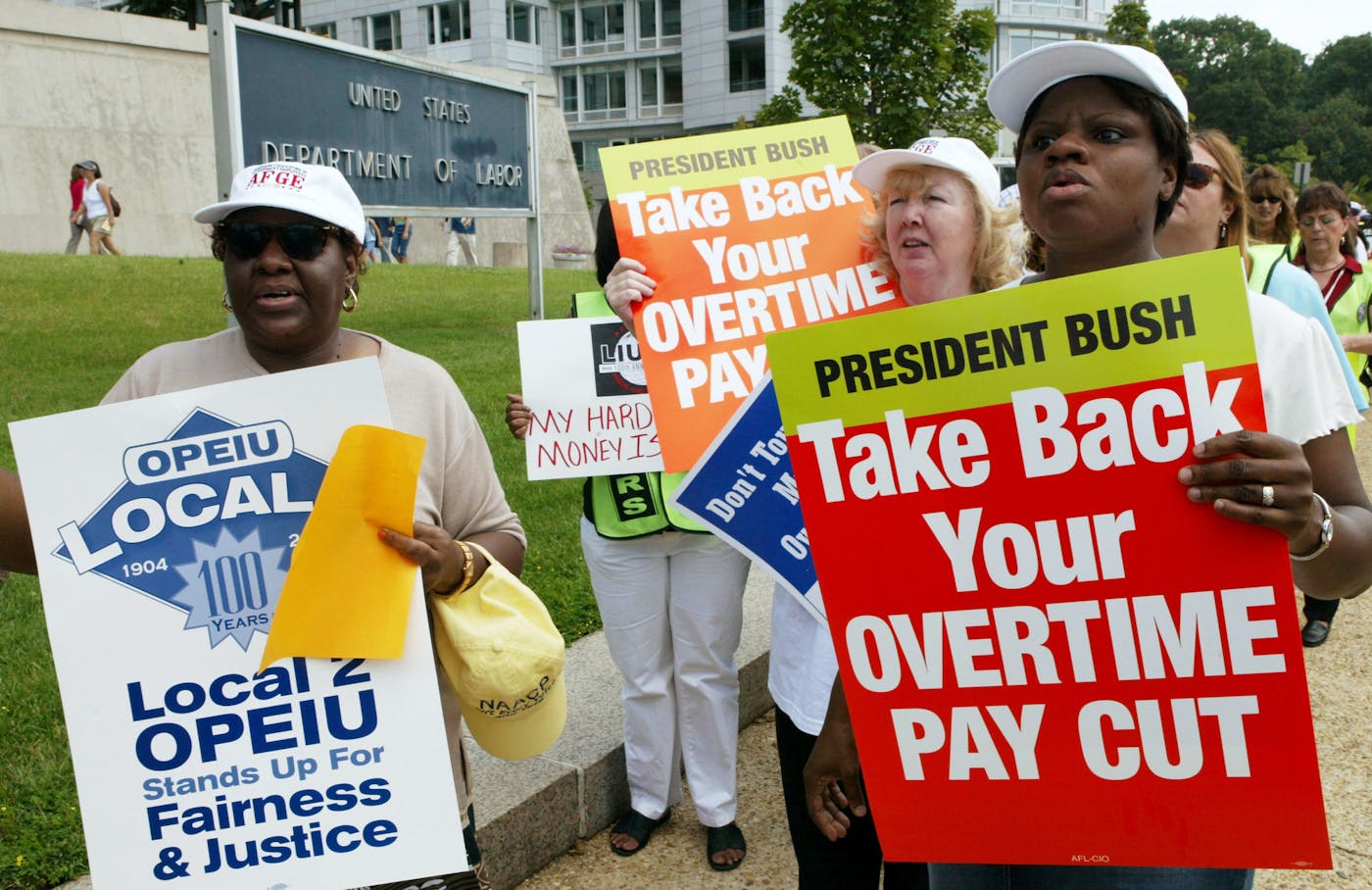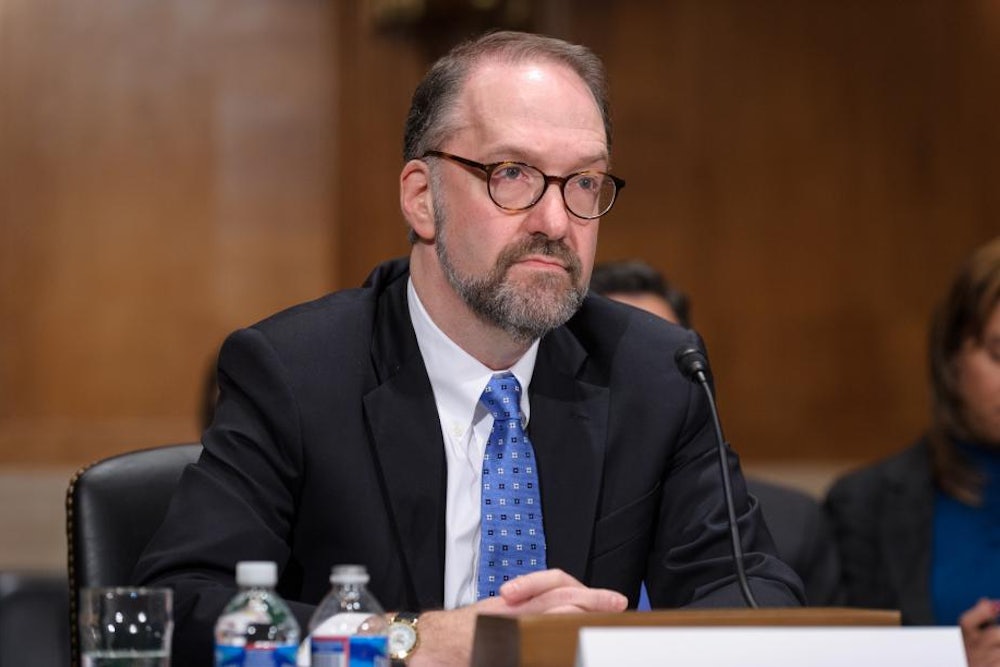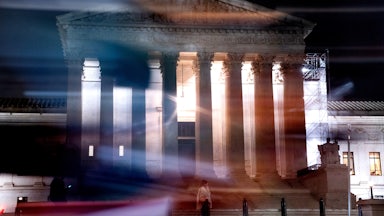The business lobby is in a fury about President Joe Biden’s nomination of a soft-spoken economist named David Weil, who propounds the unacceptably radical notion that the nation’s wage and hours laws ought to be enforced. “Wages before inflation are rising for workers of all skill levels amid an historic labor shortage,” The Wall Street Journal editorialized last week (“David Weil vs. Small Business”). Businesses “don’t need a regulator whose main goal is to use coercion to raise costs for employers trying to emerge whole from the pandemic.”
Weil, who has been nominated to be administrator of the Labor Department’s Wage and Hour Division, held that position under President Barack Obama, and the Journal and the U.S. Chamber of Commerce and the Heritage Foundation (which by law, incidentally, is not supposed to lobby) all seek to punish Weil for promulgating policies that Biden’s Labor Department will likely reimpose in some form, whether the Senate confirms Weil or not. (As usual, a key obstacle to confirmation is Senator Joe Manchin, Democrat of West Virginia.) These policies don’t put new burdens on business. They seek to restore old burdens from which business long ago wriggled free. Perhaps the best example is the Labor Department’s long twilight struggle to get business to take seriously its legal requirement under the Fair Labor Standards Act (1938) that people who work more than 40 hours within a given week be paid time and a half. Its latest attempt will be a proposed regulation that’s expected to be introduced this April.
The Fair Labor Standards Act, or FLSA, is a good example of New Deal legislation that wouldn’t have a prayer of passing Congress today—not because of any weakness in the statute (drafted by Senator Hugo Black, Democrat of Alabama, shortly before he was elevated to the Supreme Court), but because today’s Democratic members of Congress are way too easily intimidated from passing such sweeping reforms. Even in 1938, President Franklin Roosevelt had to appease Southern Democrats to get the bill passed by exempting farm laborers. Still, the bill did eventually pass.
The Wall Street Journal would have you believe that a temporary labor shortage in the midst of an extremely robust economic recovery is reason enough not to enforce statutory limits on working hours. Give me a break. The seventy-fifth United States Congress (1937–39) imposed those limits during an especially rough patch of the Great Depression, when unemployment rose to 20 percent.
The FLSA requires workers to be paid time and a half for overtime work unless they’re ineligible. You’re ineligible if your duties are executive, administrative, or professional; if you’re a salesperson who is frequently on the road (think Willy Loman); or if you’re a computer worker operating at a high skill level like software engineering. As you might guess, the business lobby pressed for decades to expand the number of people included in these ineligible categories under the Labor Department’s “duties test.”
It hit pay dirt during the pro-business administration of President George W. Bush. Bush’s labor secretary was Elaine Chao, wife to Senate Republican leader Mitch McConnell and later transportation secretary under President Donald Trump. Chao was so loathed by her Labor Department employees for gutting labor protections that when she finally relinquished her post in 2009, the department’s union local threw a “Ciao to Chao” good-riddance party to celebrate. (Instead of “For She’s a Jolly Good Fellow,” the partygoers assembled at a nearby restaurant sang, “Na na na na, na na na na, hey, hey, goodbye.”) Chao’s Labor Department reduced the duties test to absolute gibberish, allowing employers to claim that just about any given worker was ineligible for overtime.

Fortunately, the Labor Department also uses a second yardstick to determine whether an employee is overtime-eligible. If your wage is below a certain ceiling, then you must get paid time and a half for any hours exceeding 40 in a given week, regardless of what your duties are. There are a few exceptions, but not many. The idea is to keep businesses from classifying employees as administrative workers merely to bar them from collecting overtime while still paying them a pittance. The wage ceiling isn’t written into the FLSA, but since the bill’s passage it’s been imposed, along with the duties test, to enforce the law’s statutory language exempting the aforementioned categories of worker.
Overtime was intended to be a middle-class benefit. Most workers were supposed to be eligible. For decades after the New Deal, that was the case. The duties test was robust, and the wage ceiling was kept reasonably high, thus helping a larger number of workers qualify for overtime. In 1975, for instance, fully 62 percent of the full-time workforce was eligible for overtime based on salary level. The business lobby was always intent on keeping the wage ceiling as low as possible, but it was mostly ignored.
Then came the Great Inflation of the 1970s, which did much of the business lobby’s work by reducing the value of the wage ceiling. In 1978, a mere three years after the 1975 increase, President Jimmy Carter’s Labor Department resolved to raise the wage ceiling to help more workers. But Carter’s Council on Wage and Price Stability, a body created to assess the inflationary impact of pending regulations, pushed back hard, arguing the proposed increase to the wage ceiling to address inflation was itself inflationary, and questioning whether a wage ceiling was necessary at all. By the time the dust settled and the Labor Department issued a regulation increasing the wage ceiling, it was January 1981, and Ronald Reagan was about to become president.
The anti-labor Reagan scuttled the rule, first by delaying its enforcement date and later by subjecting it to other forms of bureaucratic torture. President George H.W. Bush followed Reagan’s lead and kept the regulation in the deep freeze. President Bill Clinton, noting the gravity of the situation, instituted a “comprehensive review” that never came to a close. So the 1975 salary ceiling remained in place until Bush fils came along. Bush got into a huge fight with Congress about how to change it. In the end, as noted, Bush turned the duties test into highly manipulable nonsense. He also simplified the wage ceiling, which previously had been set at different levels for different types of workers, by consolidating these into a single ceiling of $23,660. That was in 2004.
Perhaps you’re thinking that $23,660 was more money in 2004 than it is today. Not enough to make much difference! The federal poverty line that year for a family of four was $18,850. The overtime wage ceiling was just a bit higher than that. From being a middle-class benefit for which 62 percent of workers were eligible, overtime had effectively become a poverty benefit for which, by 2016, only 7 percent were eligible.
The Obama Labor Department tried to fix all this. It made a practical decision to leave intact the dog’s breakfast that Bush had made of the duties test but doubled the wage ceiling from $23,660 to $47,476. If you earned less than $47,476, it didn’t matter what your boss said your duties were, he owed you overtime whenever you worked more than 40 hours. In future years the ceiling would be “indexed” to inflation, thereby preventing another post-1975 slide. The Obama rule expanded overtime coverage from 7 percent of workers to 23 percent, according to calculations by the Economic Policy Institute.
It was the most ambitious federal intervention in the wage economy in decades and arguably, after Obamacare, the most important domestic policy enacted by Obama. But it wasn’t anything new, really. It was merely restoring to practical use the overtime provisions of the FLSA, which had been allowed since 1975 to go to seed. That is the terrible wrong for which David Weil is being held accountable by Senate Republicans and Joe Manchin. (Well, that and a couple of other policies concerning businesses misclassifying employees as independent contractors and corporations maintaining control of their franchisees’ employees, which were similarly intended to hold corporations accountable to labor laws they were once required to follow.)
Shortly before the overtime rule was to take effect in December 2016, federal district Judge Amos Mazzant in Sherman, Texas, blocked its implementation based on a willful and inaccurate reading of the statute. The following August, Mazzant threw it out (text here). The Obama Justice Department had appealed the initial ruling, but the incoming Trump administration withdrew the appeal, asking merely for clarification. Trump’s Labor Department then enacted a rule lowering Obama’s $47,476 ceiling to $35,568 so that the rule now covers (according to the EPI) about 15 percent of workers. Trump also eliminated Obama’s automatic increases in the ceiling to keep up with inflation.
“The Trump administration’s rule,” said EPI president Heidi Shierholz, who previously had been chief economist in the Obama Labor Department, “is based on the notion that someone making $35,568 a year is a well-paid executive who doesn’t need or deserve overtime protections.” That was absurd on its face. But $35,568 was better than $23,660, and 15 percent was better than 7 percent. The rule took effect in January 2020.
Now the Biden administration is preparing a new overtime rule. This time it will probably have to alter the Bush “duties clause” in order to bring a higher wage ceiling in line with Mazzant’s ruling. In March 2021, four Democratic members of Congress—Representative Bobby Scott of Virginia, chairman of the House Education and Labor Committee; Representative Mark Takano of California, who favors a 32-hour workweek (that’s two hours more than Hugo Black initially wanted); Representative Alma Adams of North Carolina; and Senator Sherrod Brown of Ohio—wrote Labor Secretary Marty Walsh urging that the new wage ceiling be set at $82,732 by 2026.
The Labor Department’s preparation of a new overtime rule, with or without David Weil in the saddle, will be premised on the notion that Mazzant and other conservative judges are acting in good faith with regard to FLSA. That seems unlikely. Consequently, we may not see overtime regulation restored to the middle-class benefit it once was until Congress has a strong enough Democratic majority to amend the FLSA to put the salary threshold, and its periodic increases to keep up with inflation, into the statute itself. That won’t likely happen anytime soon. Meanwhile, this and other remnants of the New Deal will likely continue to dribble away.
* This piece has been updated.








